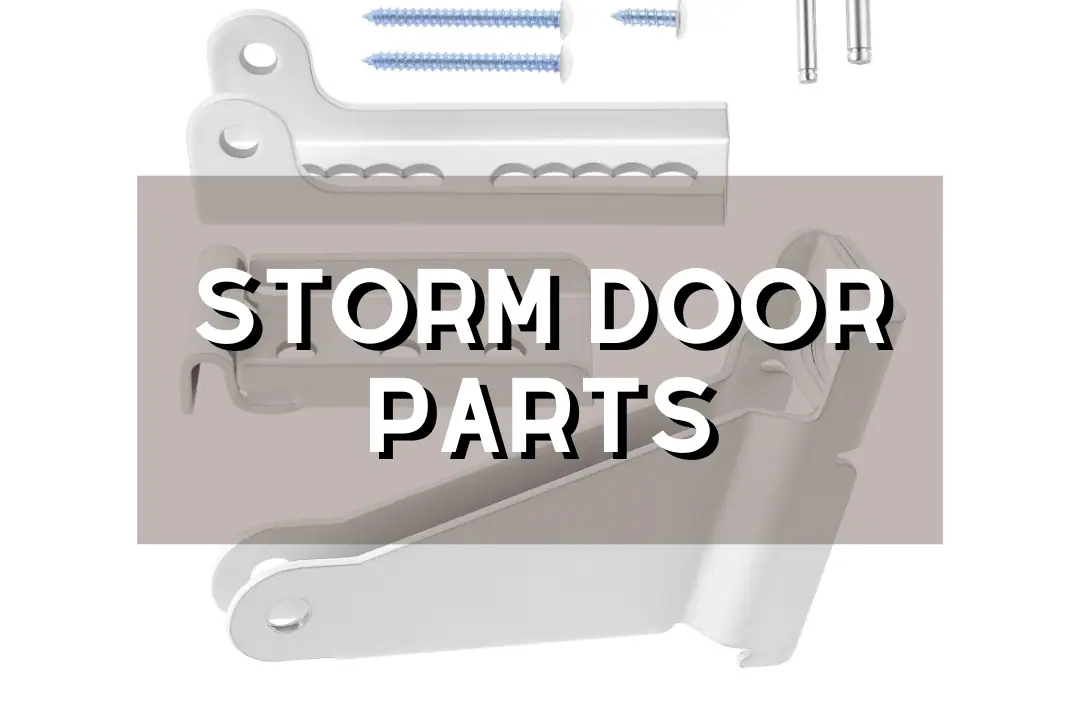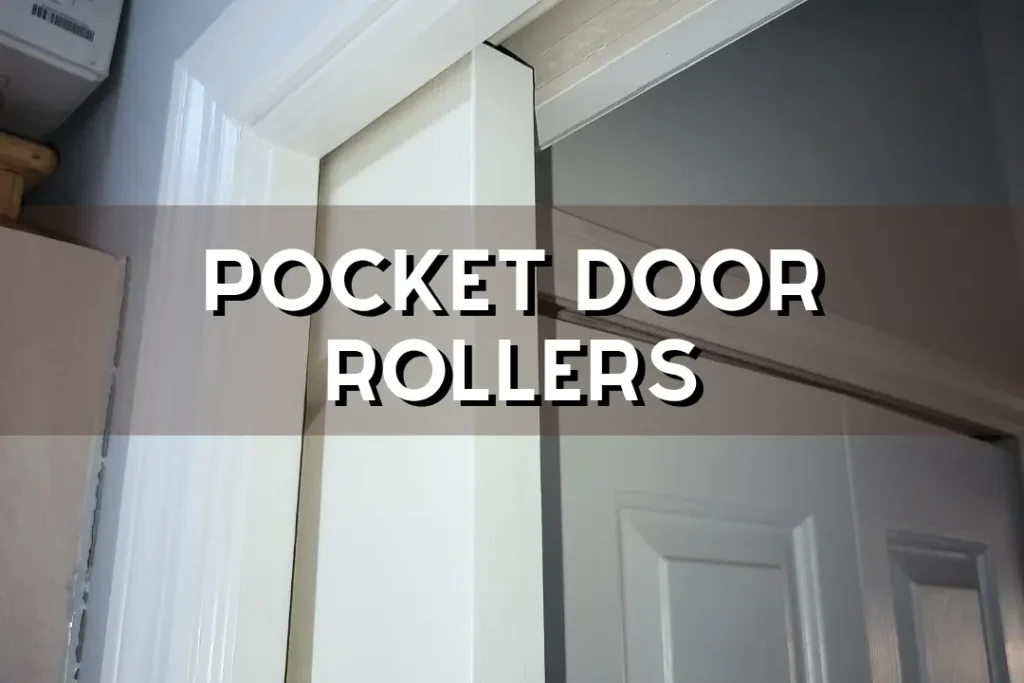
Ever been frustrated by a storm door that just won’t close right? You might be surprised to know that swapping out a few parts can make all the difference. With the right storm door parts, you can improve function, security, and style, ensuring your door works perfectly. Let’s explore how easy it is to identify and replace those crucial components!
Essential Storm Door Parts Every Homeowner Should Know
Core Components Overview
Storm doors contain several key components that work together to provide security, weather protection, and smooth operation. The most commonly replaced parts include handle sets and latch assemblies, which control entry and locking functions. Lever and knob mechanisms connect to strike plates and mortise locks that secure the door in the closed position. Closer cylinders and brackets control how the door swings shut, preventing slamming while ensuring proper closure. Hinges and hinge pins support the door’s weight and allow smooth opening and closing motion. Weatherstripping and sweeps create seals around the door perimeter to block drafts and moisture. Glass and screen panels provide the main viewing and ventilation functions, particularly in full view storm doors. Pneumatic closers and wind chains protect the door from wind damage by controlling swing speed and travel distance. Retainer strips hold panels in place, while sill extenders help manage water runoff.Brand and Model Identification
Before ordering replacement parts, you’ll need to identify your door’s exact model. Look for a white sticker on the hinge-side frame that contains the registration or model number. This information helps you match exact parts for major brands like Larson, Pella, Andersen, and EMCO doors. Each manufacturer publishes model-specific replacement guides that show which parts fit particular door series. These guides include installation instructions and part diagrams that make ordering and installation much easier. Using the correct model number prevents compatibility issues and ensures proper fit.Handle, Latch, and Lock Replacement Systems
Complete Handle Set Components
A typical handle replacement kit includes exterior and interior handle assemblies connected by a spindle mechanism. The latch assembly controls the door’s latching function, while the strike plate mounts to the door frame to receive the latch. Many kits also include mounting hardware and screws for complete installation. Night lock options add an interior privacy slide that provides extra security without requiring deadbolt installation. These locks work independently of the main latch and can be engaged from inside the home for added peace of mind.
Secure Door Latch with Night Lock
- Fits a wide range of door thicknesses
- Sturdy black finish for sleek look
- Equipped with a night lock for added security
- Easy-to-use push button mechanism
- Ideal for screen and storm doors
Fitment Requirements
Proper fitment starts with measuring screw hole spacing accurately from center to center of existing holes. You’ll also need to confirm the latch orientation as left-hand or right-hand opening, which determines how the latch mechanism operates. Door thickness compatibility varies between manufacturers and models, so verify your door’s thickness before ordering. Brand-specific profiles and backset measurements must match your existing setup to ensure the new handle aligns properly with the strike plate.Door Closers and Reinforced Bracket Systems
Types of Door Closers
Standard-duty pneumatic closers work well for lightweight doors and provide basic closing control. These single-cylinder units adjust closing speed through a simple screw mechanism and handle most residential applications effectively. Dual closer systems become necessary for heavy full view doors that require more closing force. These systems use two cylinders to provide smooth, controlled closure without slamming. Hidden or concealed closers fit specific models like Larson Platinum series and maintain clean door aesthetics. Hold-open features add convenience by allowing the door to stay open until manually released. This feature works well for hands-free entry when carrying groceries or other items.Performance Adjustment and Troubleshooting
Adjusting closing speed and latch speed involves turning adjustment screws on the closer cylinder. If your door slams shut, back out the adjustment screw slightly. If the door won’t latch properly, tighten the screw to increase closing force. Bracket reinforcement prevents wind damage and extends closer life, particularly in high-wind areas. Reinforced brackets distribute stress better than standard brackets and reduce the risk of tear-out during strong winds. These closer options provide reliable performance for different door weights and usage patterns:
Quiet-Closing Storm Door Closer
- Durable, adjustable, smooth operation
- includes hold-open for easy entry

Dual Door Closer System
- Heavy-duty for full view and heavy doors
- touch-button hold open
- quiet close

Reinforced Door Closer Bracket Kit
- Brand-compatible reinforcement
- protects from wind damage
Hinges, Wind Protection, and Hardware Accessories
Hinge Maintenance and Replacement
Symptoms of hinge wear include door sagging, rubbing at the latch side, and poor latch engagement with the strike plate. These problems often develop gradually as hinge pins wear and create play in the hinge mechanism. Replacing worn hinge pins can restore proper door alignment without replacing entire hinge leaves. For screen and storm door combinations, drop-in pin kits offer a quick refresh that improves door operation significantly. Shimming hinges helps correct door alignment when the frame has settled or shifted. Proper alignment keeps consistent gaps around the door perimeter and helps the latch engage smoothly with the strike plate.
Hinge Pin Kit for Screen Doors
- Fits various screen door hinges
- Complete kit with necessary parts
- Aluminum construction for durability
- Ensures smooth and stable hinging
- Ideal for both repair and replacement needs
Wind Chains and Protection Systems
Wind chains limit over-travel and prevent bracket tear-out during strong winds. These simple devices attach between the door and frame to stop the door from swinging too far open. Installation works best when the chain mounts into solid header framing. Pairing wind chains with reinforced brackets provides redundant protection against wind damage. This combination works particularly well for exposed entries and areas prone to sudden wind gusts.
Door Protector Chain and Spring
- Zinc plated for rust resistance
- Protects doors from wind damage
- Simple installation with included parts
- Keeps doors from swinging open too far
- Essential for storm door protection
Weatherstripping, Seals, and Energy Efficiency Components
Weatherproofing Solutions
Replacing bulb weatherstrip and compression seals restores the door’s ability to block drafts and moisture. These seals compress when the door closes, creating a barrier against air infiltration around the door perimeter. Bottom sweep installation and maintenance seals the gap between the door bottom and threshold. Adjustable sweeps accommodate slight variations in threshold height and provide consistent contact for effective sealing. Drip caps and sill extenders manage water runoff away from the threshold area. Kerf-fit and adhesive-backed profiles match specific door brands and ensure proper installation without gaps or overlaps.Energy Control Benefits
Reducing drafts and water intrusion improves indoor comfort and can lower heating and cooling costs. Well-sealed storm doors create an additional barrier that reduces the load on your home’s HVAC system. Brand-specific seal compatibility helps maintain the door’s original performance characteristics. Using the correct seal profiles maintains proper compression and sealing effectiveness over time.Glass and Screen Panel Systems for Full View Storm Doors
Full View vs. Self-Storing Options
Interchangeable full glass and screen panels allow seasonal changes between weather protection and ventilation. Full view storm doors typically use separate panels that swap out completely, while self-storing models integrate both functions in one unit. Correct sizing and retainer clip types vary by manufacturer and model series. Using the wrong retainers can cause panel rattling or poor fit that affects both appearance and function. Glass replacement requires careful measurement and proper safety glass specifications. Laminated safety glass provides enhanced protection against impact and weather compared to standard tempered glass. Premium models often include this upgrade for improved durability and security.Panel Replacement Considerations
Model-specific tracks and retainers control how panels fit and operate within the door frame. Self-storing systems use balance mechanisms and tracks that require exact replacement parts for proper operation. EMCO ¾ light replacement components include specialized tracks and guides that differ from full view systems. Screen and glass compatibility depends on the door’s design and ventilation requirements.Step-by-Step Installation and DIY Replacement Guide
Basic Tools and Preparation
Phillips and flat screwdrivers handle most storm door hardware removal and installation. An adjustable wrench helps with nuts and bolts, while a power drill speeds up screw installation. A measuring tape confirms dimensions and spacing before starting work. Create a measurement checklist that includes hole spacing, door thickness, and hinge orientation. Pre-installation compatibility checks prevent ordering wrong parts and save time during installation.Installation Workflow
- Remove old components safely by supporting the door and working systematically
- Measure hole spacing and door thickness to confirm part compatibility
- Align new hardware carefully before tightening screws completely
- Test operation and adjust as needed for smooth function
Post-Installation Checks
Closer speed adjustment fine-tunes door operation after installation. Test both closing speed and latch engagement to confirm proper adjustment. Latch alignment verification checks that the latch catches the strike plate consistently. Wind chain and hold-open testing confirms that safety features work properly. Check that chains limit door travel without being too restrictive for normal use.Maintenance Tips and Troubleshooting Common Issues
Regular Maintenance Schedule
Quarterly cleaning and lubrication keeps moving parts operating smoothly and prevents premature wear. Clean hinge pins and latch mechanisms, then apply light oil to reduce friction and corrosion. Seasonal closer adjustments account for temperature changes that affect pneumatic closer performance. Cold weather may require slight adjustment to maintain proper closing force and speed. Hardware inspection and tightening prevents loose screws from causing alignment problems. Weatherstrip condition monitoring helps identify worn seals before they affect energy efficiency significantly.Common Problem Solutions
Door slamming issues typically require closer adjustment or upgrade to a higher-capacity unit. Back out the adjustment screw gradually until the door closes smoothly without slamming. Latch engagement problems often stem from door misalignment or worn strike plates. Check hinge condition and adjust the strike plate position to improve latch catch reliability. Wind damage prevention strategies include reinforced hardware installation and wind chain use in exposed locations. Screen and glass rattle fixes involve checking retainer condition and panel fit.Upgrade Options for Enhanced Performance
Hold-open closers add convenience for busy entries and reduce wear from repeated opening and closing. Touch-button release mechanisms make operation simple and reliable. Night-lock handle sets provide additional security without requiring deadbolt installation. These locks work independently of the main latch and can be engaged from inside for privacy. Reinforced hardware makes sense for wind-prone areas where standard components may fail. Upgrading brackets and adding wind chains prevents costly damage during storms. These upgrade options provide enhanced convenience and performance:
Easy Hold Open Door Closer
- Touch-button convenience
- smooth, quiet closing
- quick install

Standard Duty Door Closer
- Simple to mount and adjust
- consistent closure
- reduces slamming noise
FAQs
What are the main parts of a storm door?
The main parts of a storm door include the door frame, the glass or screen panels, the handle set, a pneumatic closer, hinges, and a weather-stripping seal. These components work together to provide security and protection against the elements.
How do I replace parts on a storm door?
To replace parts on a storm door, first identify the part that needs replacing and refer to the manufacturer’s guide for specifications. Remove the damaged part carefully, usually with a screwdriver, and replace it with a compatible new piece. Always follow safety instructions and consider professional help if unsure.
Where can I buy storm door replacement parts?
Storm door replacement parts can be purchased at most home improvement stores such as Home Depot or Lowe’s. They are also available online through retailers like Amazon, or directly from the door manufacturer’s website.
What is the purpose of a storm door sweep?
A storm door sweep helps to prevent drafts by sealing the gap at the bottom of the door. It acts as a barrier against dirt, debris, and insects, improving energy efficiency by reducing cold air infiltration during colder months.
Can I repair a storm door instead of replacing it?
Yes, many common issues with storm doors can be repaired rather than replacing the entire door. For instance, hardware can be tightened or replaced, and small holes in screens can be patched. However, significant damage to the frame or extensive rust may require a full replacement.

Abdelbarie Elkhaddar
Glamorwood Ltd.
A door expert and home improvement writer with over 12 years of experience. I help homeowners and contractors choose smart, stylish, and secure doors.








Leave a Reply